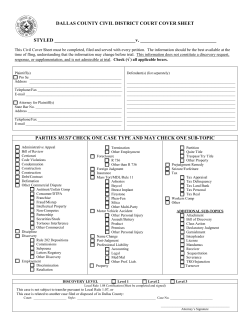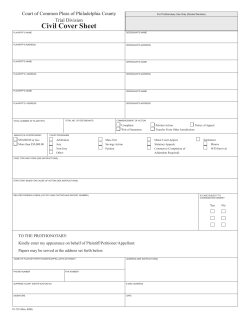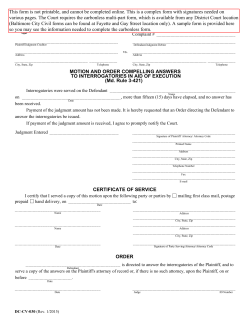
read more - Mullins Lawyers
INSURANCE l Issue No. 22 l Cliff fall victim fails to recover damages June 2015 In the recent case of Morris v Redland City Council & Anor1, Mr Andrew Morris sought damages from the Redland City Council (the Council) after falling down an unfenced cliff when visiting North Stradbroke Island. However, his Honour Martin J found in favour of the RCC. This eNews investigates why. lost his balance and fell 20 metres down a cliff and onto the beach. The Plaintiff suffered severe injuries including paraplegia. He later said he did not know the cliff was right in front of him. The Plaintiff and a group of friends had rented a house for a few days at Point Lookout for a 40th birthday celebration. On the day of arrival, the friends had dinner and drinks at the house. The Plaintiff consumed at least eight beers over dinner. The Plaintiff argued the Council was negligent in failing to erect warning signs alerting the public to the location of the cliff face, or warning them not to walk through the thick vegetation. At about 9.00pm the Plaintiff and two other friends left the house to look for steps down to the beach. There was a plan to go fishing the next morning and they wanted to have a look at the beach. Some distance from the house, and across the road towards the beach, there was a wooden boardwalk about three metres wide which had a wooden fence running for about 20 metres along its eastern boundary. This fence was designed to prevent a person walking directly off the pedestrian crossing, over the boardwalk and into the vegetated area. The Plaintiff alleged that near the wooden boardwalk there was a pathway on the headland that ran into the bush and down into a grassy area. The Plaintiff and his friends assumed it was the path to the steps leading to the beach. The only illumination available to the three men was a headlamp worn by the Plaintiff and a handheld torch taken by one of the other men. After travelling down the path and stopping to drink more beer, the group reached a point where the Plaintiff thought he saw steps in the distance. As he got up to take a closer look, he grabbed hold of a tree and leant out to get a better view. The tree snapped. The Plaintiff 1 [2015] QSC135 Mullins Lawyers l eNews Publications l Page 1 The Plaintiff brought legal proceedings for personal injuries against the Council. Quantum had been agreed prior to the trial. The sole remaining issue was liability. One of the other men returned to the island approximately two months after the incident with the Plaintiff’s parents. The man attempted to find the path they walked along however later admitted under cross examination that “we struggled to find one”. The man was photographed forcing his way through heavy bush and other vegetation which could not realistically be described as a “path”. The Council gave evidence that no paths had been created by the Council in the area described by the men. Evidence was given of signs indicating the actual stairs to the beach however they were further down the road. The men did not see these signs. Martin J made the following findings of fact: There was no path, manmade or otherwise, running through the bush to the cliff. The Plaintiff had wandered through a thickly vegetated area about which he knew nothing and had done so on a dark night. The Plaintiff was aware there was a cliff in front of him. That is why he took hold of the tree when leaning out to look at what he thought were steps. The Plaintiff argued the Council was negligent in failing to erect warning signs alerting the public to the location of the cliff face, or warning them not to walk through the thick vegetation. The Plaintiff and his friends were determined to force their way through the bush and may have continued looking for the steps, even if there had been warning signs. Any duty owed by the Council was confined to taking reasonable care to avoid foreseeable risk or harm to the Plaintiff while he was at Point Lookout. There was no evidence that the Council was aware of anyone else suffering injury after entering the headland, or that Council personnel had observed or encouraged people to walk through the area. Martin J did not consider it reasonably foreseeable that a person, at night, would walk from the boardwalk and cross through the headland bushes, reach the top of the cliff, and fall from it. Even if warning signs had been put up at this location, they would not have been illuminated and could not have been seen at night. In any case, the Plaintiff and his friends were determined to force their way through the bush and may have continued looking for the steps, even if there had been warning signs. The Plaintiff’s claim failed on the question of liability and was dismissed. The inability to prove the existence of any recognisable path was an insurmountable problem for the Plaintiff and was fatal to his arguments on foreseeability of harm. Daniel Sullivan Associate Mullins Lawyers t +61 7 3224 0358 dsullivan@mullinslaw.com.au Cameron Seymour Partner Mullins Lawyers t +61 7 3224 0360 cseymour@mullinslaw.com.au Mullins Lawyers l eNews Publications l Page 2
© Copyright 2025











